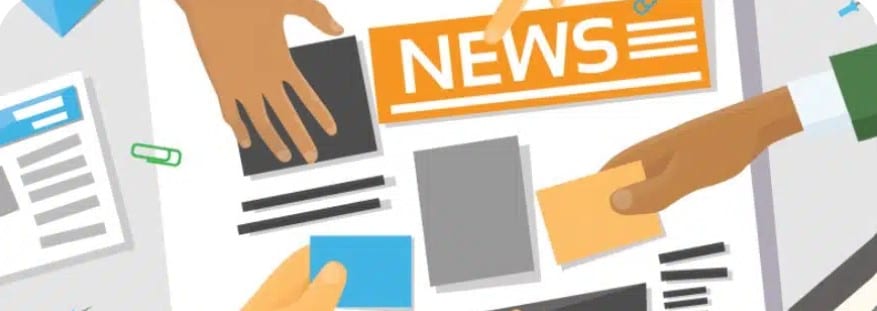The PR industry has changed in many ways over the years. Many of the old PR strategies no longer work, as technology has changed how people communicate.
One of the most significant of these changes is in the nature of modern PR collateral. Not so long ago, press kits used to be folders stuffed with brochures, bios, and glossy releases. Today, they’re usually sleek, clickable folders accessible over the cloud.
In this article, we’ll explore this topic and suggest ways to keep up with modern trends in the PR industry. Let’s dive in!
The Evolution of PR Collateral
As we just mentioned, old-school PR leaned heavily on tangible assets. Things like printed media kits, physical brochures, bios, and mailed press releases would have been fixtures in the average press kit, to be handed out at events or mailed to newsrooms. Today, PR professionals and journalists are much more reliant on the internet and internet-enabled technology.
As Shawn Plummer, CEO at The Annuity Expert, advises, “Adopt a cloud‑first media library so that all of your assets, whether documents, images, or videos, are updated instantly and accessible on any device. This way, you can adjust your messaging or share new information the moment circumstances change, ensuring that anyone who needs information always gets the most current details.”
In place of a physical folder, the average press kit today would likely feature:
- Link Trees: A single link you can share that opens up a page with multiple other important links. This could lead to different sections of your online press materials.
- Online Multimedia-Rich Press Rooms: Dedicated sections on a company’s website designed for the media. These may, in turn, include:
- Downloadable High-Resolution Images and Videos
- Interactive Infographics
- Audio Files (e.g., soundbites from interviews)
- Embeddable Social Media Posts
- Cloud-Hosted Documents: Documents like press releases or backgrounders that are available from a cloud-hosted service like Google Docs.
Most journalists don’t sit behind desks all day, so your media kit should be easy to open on a phone, with clickable links and embeddable media. This is one of the ways you can enhance your PR using technology.
Ian Gardner, Director of Sales and Business Development at Sigma Tax Pro, shares the following insight: “Your media kit must be mobile‑first. Think easy navigation and rapid load speeds so editors can grab what they need on the go. In practice, that means pared‑down layouts, collapsible sections for quick scanning, and pre‑loaded files so even in low‑connectivity environments your kit performs flawlessly.”
The Rise of Link Trees & Micro Hubs
Journalists are constantly inundated by a barrage of business owners seeking PR exposure. With that much overload, adopting a simple but effective approach will win the day.
That’s where link trees and micro hubs come in. These streamlined, centralized pages give people quick access to your most important content. Whether it’s a press kit, recent features, social profiles, or a calendar link, these tools cut through the noise and direct audiences exactly where you want them to go.
You should share your linktree or the link to your micro hub directly with any journalist you’re seeking to work with, but you can also make them more accessible by dropping them in strategic spots like your email signature, Twitter bio, or even your LinkedIn headline. With one click, journalists, clients, or collaborators can get the full picture without hunting for it.
Ben Bouman, Business Owner at HeavyLift Direct, advises that you use Linktrees to make your PR content more accessible. “When reaching out to journalists, always anticipate what information they may need from you and organize this using Linktrees with clear labels and regular updates. This level of organization not only saves reporters time but also is a great way to demonstrate your brand’s professionalism, leading to stronger media relationships and more consistent coverage.”
Visual & Interactive Content: The New PR Staple
In designing your content, be sure to keep in mind the fact that multimedia content is proven to hold attention and boost retention better. It can also be easily repurposed across PR, social media, and email outreach, making your content work harder. So when creating your press kit, be sure to include:
- Short video intros from founders
- Product demo clips
- Podcasts or audio snippets
- Customer testimonials
Nicolas Breedlove, CEO at PlaygroundEquipment.com, shares, “Embedding short videos, interactive infographics, and audio clips turns a static release into a multimedia story that sticks. I recommend leading with a 30‑second founder message, followed by an interactive data visualization, and then providing soundbites. This three‑tiered experience keeps journalists engaged and therefore more likely to report your PR news with some energy.”
The Importance of Personalization in Modern PR
Generic pitches are easy to ignore. Custom, personalized URLs tailored to the recipient aren’t.
For instance, if you’re pitching to a publication like ABC Media, you might share a link such as yourbusiness.com/abcmedia. This small gesture shows you’ve done your homework, and more importantly, it gives you control over the narrative they see.
As Lacey Jarvis, COO at AAA State of Play, explains, “Personalized microsites or landing pages can include curated press materials, exclusive data, or a story angle crafted for the target audience. These pages can be updated in real time. If something changes, such as breaking news or a fresh quote from your CEO, you won’t need to send another email. Just update the link.”
This level of attention to detail builds trust by showing respect for a journalist’s time, and dramatically increases your chances of getting some coverage.
Final Thoughts
PR collateral isn’t just digital now, it’s strategic, real-time, and built for attention-starved audiences. Beyond making the shift to digital collateral, the best brands don’t just create press kits. Instead, they create and build living, breathing content hubs that work across platforms, helping to align PR, SEO, and content marketing. For more PR learning, we recommend reading our guide to turning a one-time media mention into ongoing press coverage.



